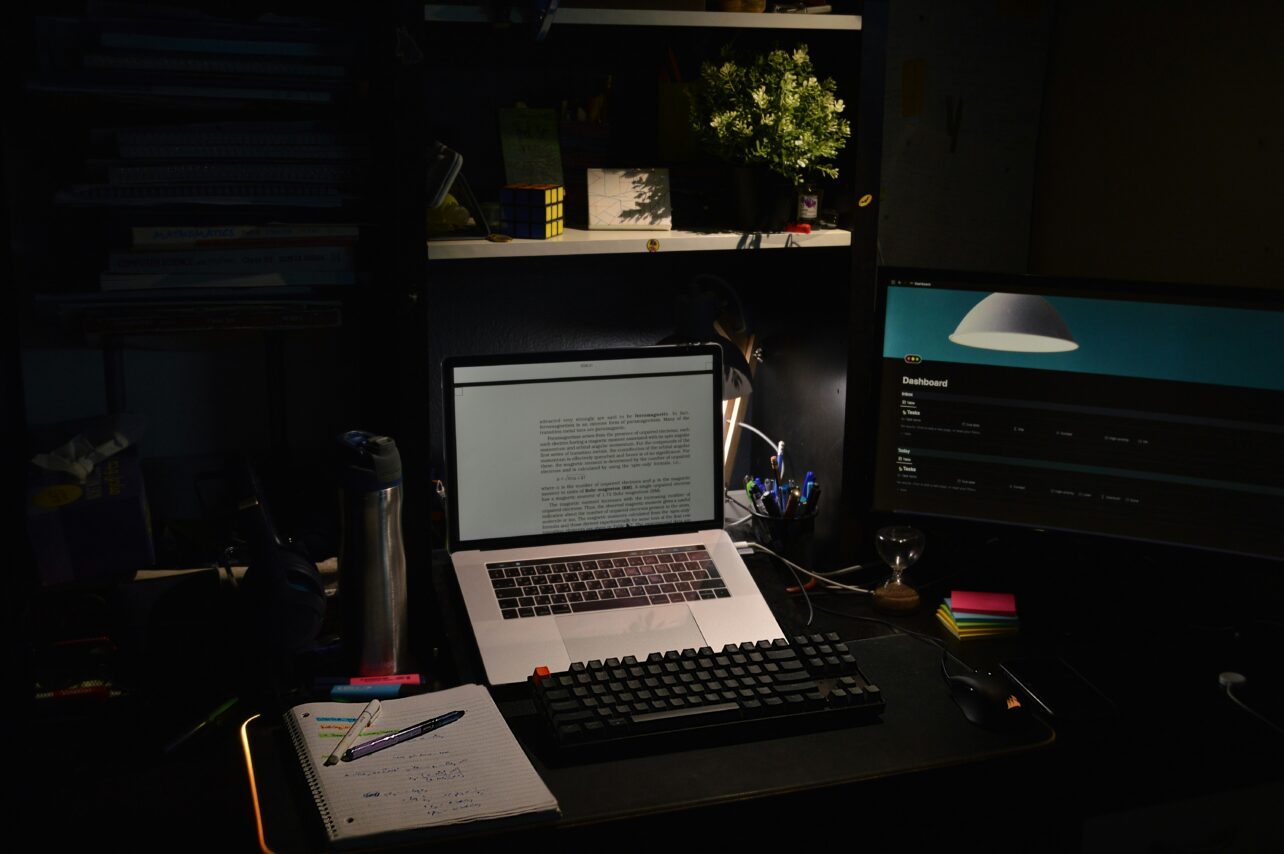A study bedroom is a room designed for both studying and sleeping, combining the functionality of a study area with the comfort of a bedroom. Having a dedicated study space enhances focus, productivity, and overall well-being.
Many of us, and so Stella Trout, a full-time professional at Herzing University, believe that the most crucial element in successful study habits is location—a spot similar to a desk in your bedroom or personal office. Therefore, you should think about making the most of your bedroom for studying.
Key Elements of a Study Bedroom
Desk and Chair
- Ergonomic Design: Ergonomic furniture reduces strain and improves comfort. A study by Cornell University found that ergonomic setups can increase productivity by 17% and reduce musculoskeletal problems.
- Comfort and Support: A supportive chair and a spacious desk are crucial for prolonged study sessions. Examples include adjustable height desks and ergonomic chairs with lumbar support.
- Examples: Herman Miller Aeron Chair, IKEA Bekant Desk like this one as example.
Lighting
- Natural Light vs. Artificial Light: Natural light boosts mood and productivity. Artificial light ensures consistent illumination. A study by the Lighting Research Center found that students exposed to natural light perform 25% better on tests.
- Recommended Lighting: LED desk lamps, overhead lighting with adjustable brightness. For instance, the TaoTronics LED Desk Lamp offers adjustable brightness and color temperature settings.
- Optimal Placement: Place desks near windows for natural light and use task lighting for focused work areas.
Storage Solutions
- Organized Storage: Helps maintain a clutter-free environment, reducing distractions. Research shows that a clutter-free space can lead to a 10% increase in productivity.
- Types: Shelves, drawers, cabinets, and under-bed storage.
- Maximizing Space: Use vertical space with wall-mounted shelves and multi-functional furniture like the IKEA Kallax series.
Design Tips for a Study Bedroom
Color Scheme
- Impact on Focus: Colors like blue and green promote calm and concentration. A study by the University of British Columbia found that blue environments improve creativity and green environments enhance focus.
- Recommended Palettes: Neutral tones with accents of blue, green, or yellow.
Layout and Space Management
- Efficient Use of Space: Arrange furniture to maximize floor space and ensure easy movement.
- Effective Layouts: L-shaped desk setups, bed against the wall to free up floor space. For example, a corner desk layout can save space and provide a larger work area.
Decor and Personalization
- Personal Touches: Photos, posters, and plants make the space inviting.
- Clutter-Free Environment: Minimalist decor reduces distractions and enhances focus.
- Tips for Minimalistic Decor: Use a few key decor items and keep surfaces clear. Studies show that minimalistic environments can reduce stress by 20%.
Technology and Gadgets
Essential Gadgets
- Devices: Laptops, tablets, noise-cancelling headphones. Examples include the Apple MacBook Air, Microsoft Surface Pro, and Bose QuietComfort 35 II headphones.
- Smart Gadgets: Smart speakers for hands-free control and digital assistants for reminders. The Amazon Echo can manage schedules and provide reminders.
Connectivity and Power Solutions
- Internet Connectivity: High-speed Wi-Fi ensures smooth online learning. A study by the Pew Research Center found that 94% of students use the internet for school assignments.
- Power Management: Use power strips with surge protection and cable organizers like the Belkin SurgePlus USB Swivel Charger.
Study Habits and Environment
Creating a Productive Atmosphere
- Clean and Organized Space: Regular cleaning maintains an inviting study area.
- Regular Breaks: Short breaks prevent burnout and improve productivity. The Pomodoro Technique, which involves 25 minutes of focused work followed by a 5-minute break, is highly effective.
- Staying Focused: Use tools like timers and apps to manage study sessions. Apps like Forest and Focus@Will can help maintain focus.
Ergonomics and Health
- Good Posture: An ergonomic setup promotes a healthy posture. Research indicates that good posture can increase concentration by up to 15%.
- Ergonomic Tips: Adjust chair height, use footrests if needed.
- Exercise for Breaks: Simple stretches and exercises to relieve tension. Incorporating exercises like the “desk stretch” can alleviate back pain.
Case Studies
I spoke with students on different universities about what changes they noticed when they optimized their study bedroom setups.
“My ergonomic chair and proper lighting have made long study sessions much more comfortable.”
Jane, a university student
Real-life examples of how a well-designed study space improved productivity. Ahmed, a professional working from home, reports a 30% increase in work efficiency after redesigning his study bedroom.

1 comment